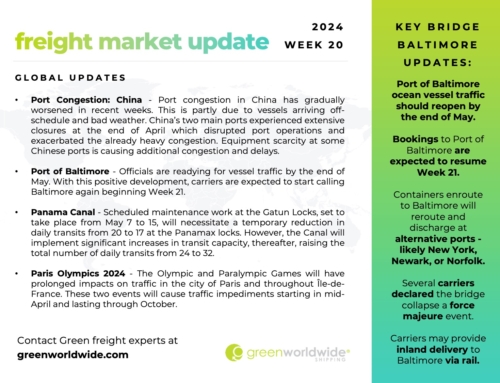Terminal operators at the ports of Los Angeles and Long Beach are worried that longer rail container dwell times at their facilities will jeopardize their ability to accommodate import volumes during what is expected to be an early peak season this summer.
Rail Power Challenges
The longer containers sit at terminals, the more needless maneuvering is required to reach older containers hidden under stacks of newer ones, adding to the unending congestion.
Major U.S. railroads have said that their inability to provide adequate intermodal capacity to Southern California is due to supply chain constraints throughout their networks, as well as chassis shortages at rail ramps in the U.S. interior, but that service to the West Coast would improve as those issues are resolved.
The average rail container dwell time in Los Angeles and Long Beach is currently around 11.45 days. In April, the wait was 11 days, up from 10.5 days in March. These delays are exacerbating the congestion issues at the terminals and the entire port-related supply chain is slowing.
Early Peak Season
Many retailers are pushing up their purchase order periods for holiday season merchandise from Asia by four to five weeks in response to the ongoing congestion at ports in Asia and the United States, as well as the shortage of vessel capacity following the recent record import levels. As a result, the peak season will likely begin in early July rather than August, as it has in previous years.
Other Productivity Measures Show Improvement
In contrast to the extreme rail delays, the average time for containers leaving the terminals for local distribution continues to decrease, dropping from nearly 4 days in March to about 3.5 days in April.
The port complex’s efficiency metrics are improving in other aspects as well. The number of container ships at anchor awaiting berthing space has dropped to 18 as of last Thursday, down from more than 30 container ships at anchor per day from December to March. Truck turn-times have shown improvement and there are no reports of truck capacity or labor shortages, just that drivers are not able to make their usual three turns a day, due to the overcrowded terminals.
The window before holiday season merchandise begins to arrive from Asia is narrowing, therefore improving rail dwell times now is especially important.
As Green continues to monitor the situation, stay up-to-date on freight and trade news by following us on Facebook, Twitter, and LinkedIn. For continuous updates, make sure to check out our website at greenworldwide.com.






